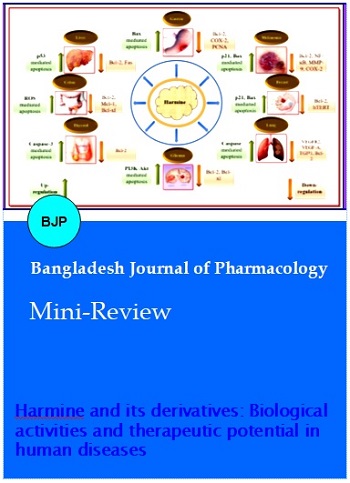Harmine and its derivatives: Biological activities and therapeutic potential in human diseases
DOI:
https://doi.org/10.3329/bjp.v13i3.34990Abstract
This review article aims to provide an update on the sources, pharmaco-logical and biological profile of a β-carboline alkaloid, harmine which is a major bioactive component of various plants mainly Peganum harmala. Harmine’s wide range of pharmacological properties has been well-documented as anti-cancer, anti-inflammatory, anti-oxidant, neuroprotective, anti-depressant, and antimicrobial. Although reported data suggests a multifunctional pharmacological role of harmine but farther experimentation on its molecular mechanism of action, synthetic chemistry approaches, and preclinical studies are yet obligatory to fully uncover its pharmacological efficacy.
Downloads
253
190

Downloads
Published
How to Cite
Issue
Section
License
Authors who publish with this journal agree to the following terms:
- Authors retain copyright and grant the journal right of first publication with the work simultaneously licensed under a Creative Commons Attribution License that allows others to share the work with an acknowledgement of the work's authorship and initial publication in this journal.
- Authors are able to enter into separate, additional contractual arrangements for the non-exclusive distribution of the journal's published version of the work (e.g., post it to an institutional repository or publish it in a book), with an acknowledgement of its initial publication in this journal.
- Authors are permitted and encouraged to post their work online (e.g., in institutional repositories or on their website) prior to and during the submission process, as it can lead to productive exchanges, as well as earlier and greater citation of published work (See The Effect of Open Access).
